Organizations and individuals in the firefighting community often need to advertise for, interview, or hire new employees or volunteers. This is especially true of fire departments with part-time employees who may have other responsibilities outside of volunteering with the department. To get your foot in the door with potential employers, you’ll want to create a resume that highlights your relevant skills, experience, and education so you can begin interviewing for volunteer firefighter positions and even full-time firefighter jobs. A well-written resume is an important first step when applying for any job. Creating an impressive resume will help you stand out from the competition during job interviews and increase your chances of getting hired as a firefighter. If you’re seeking to become a volunteer firefighter or another type of firefighting job, take a look at our helpful sample resume for a volunteer firefighter below and see what kind of advice we have for you!
Volunteer Firefighter Resume Example
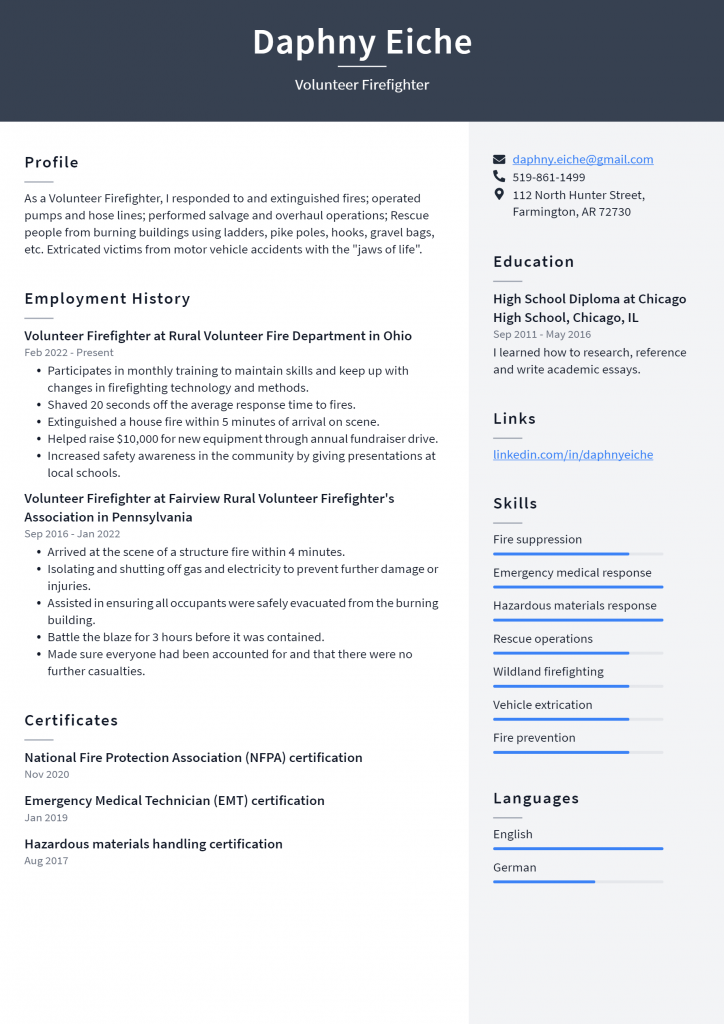
Download This Volunteer Firefighter Resume as PDF
Firefighter Resume Example
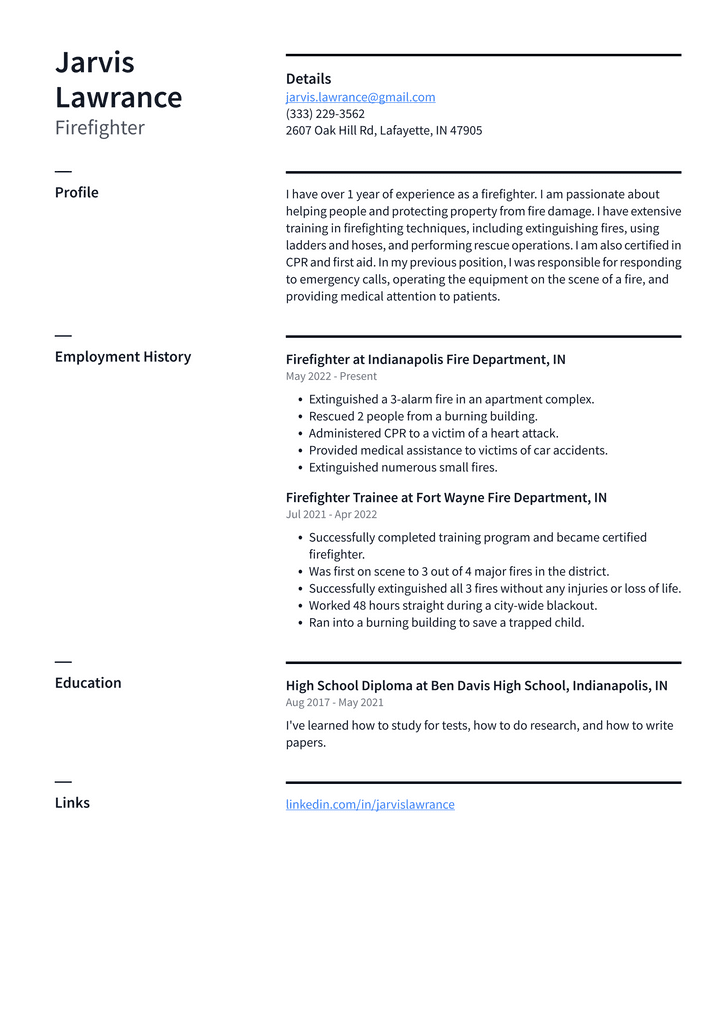
Download This Firefighter Resume as PDF
Battalion Chief Resume Example
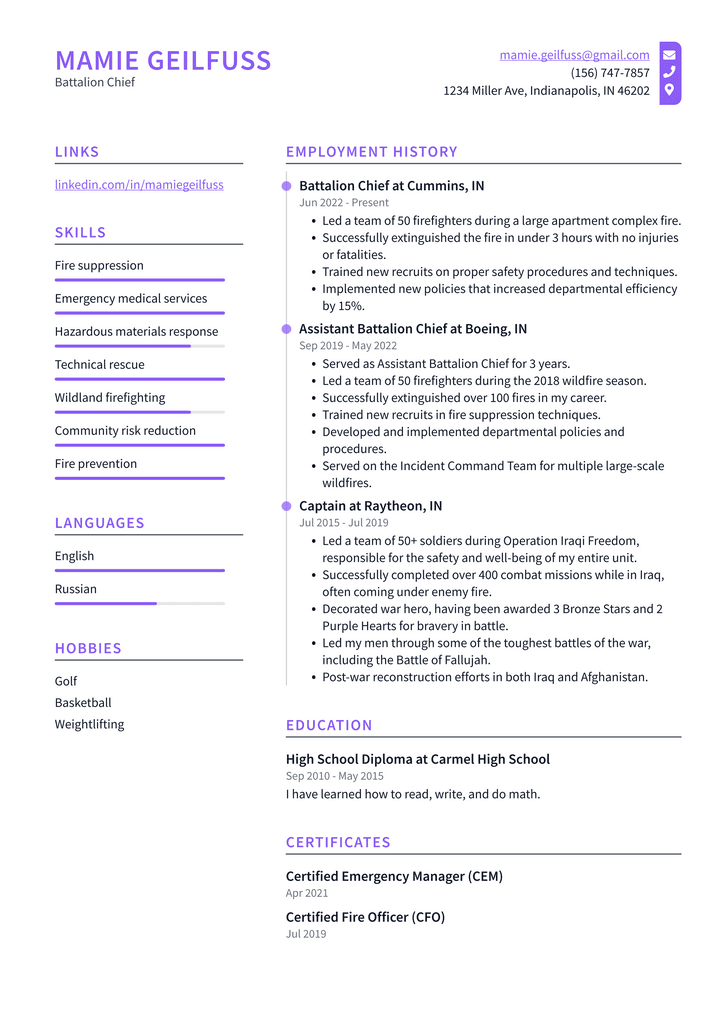
Download This Battalion Chief Resume as PDF
Fire Chief Resume Example
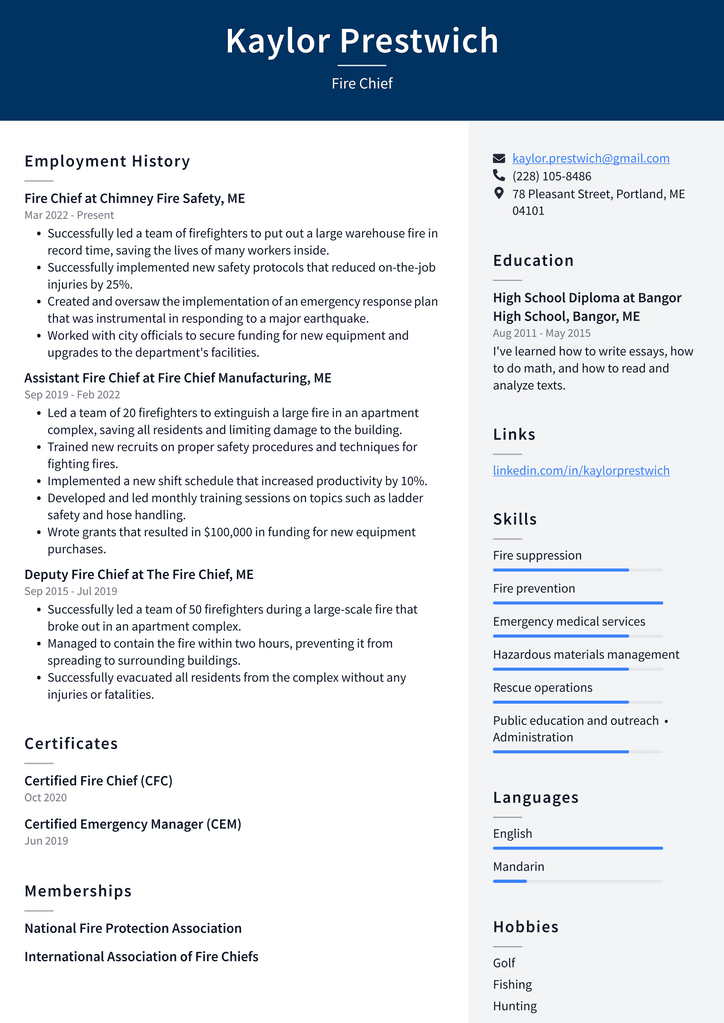
Download This Fire Chief Resume as PDF
Assistant Fire Chief Resume Example
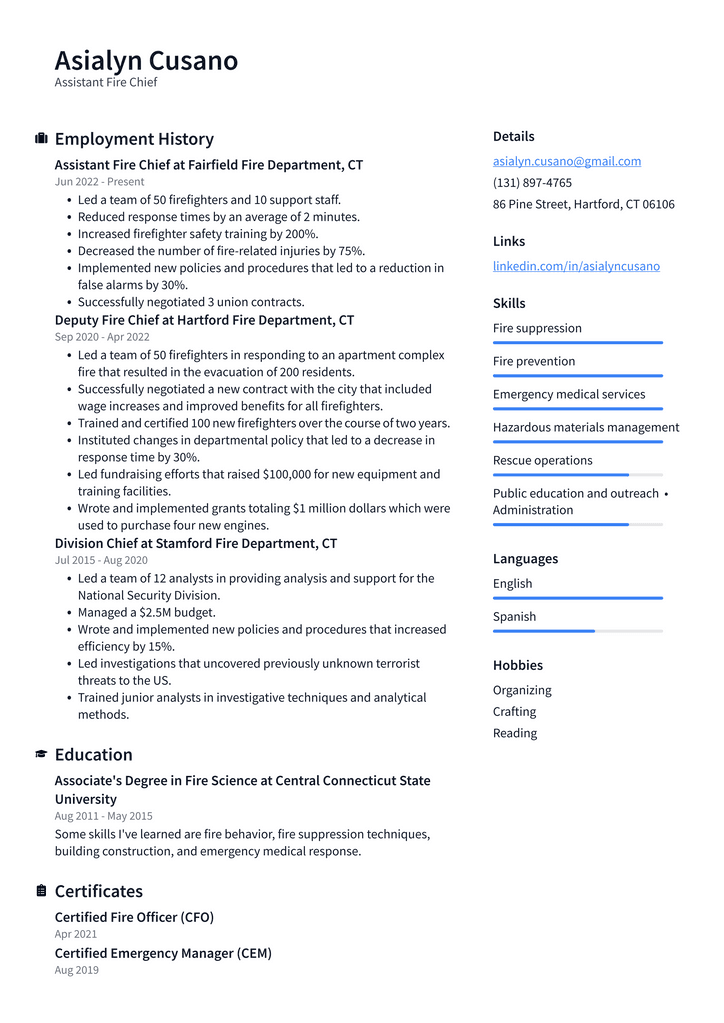
Download This Assistant Fire Chief Resume as PDF
Deputy Fire Chief Resume Example

Download This Deputy Fire Chief Resume as PDF
Division Chief Resume Example
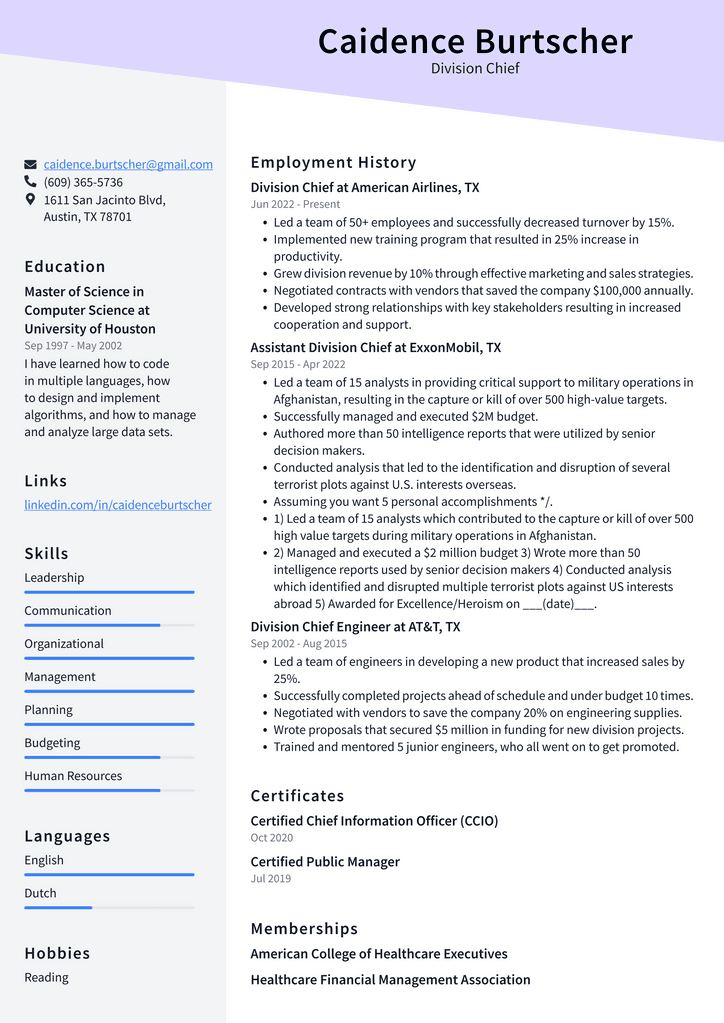
Download This Division Chief Resume as PDF
What to Include in a Volunteer Firefighter Resume
As with a professional resume, you’ll want to include information on your education, work experience, and skills, but you may also want to consider other factors as well. These may include: – Volunteering (and any experience) you may have in emergency response, including firefighting, EMT, and paramedic work – Emergency medical training you’ve received – First-aid training and certification you’ve received – Driver’s license, vehicle type, and endorsements – Driving distance and time to the fire station – Computer skills (especially if you’ll be using the fire department’s software)
Skills to Include in Your Firefighter Resume
These are the core skills you’ll want to highlight in your volunteer firefighter resume. They are directly related to the job description of a firefighter and will be useful in almost any fire department. – Responding to emergency situations – Firefighters are called to respond to a wide variety of emergency situations, ranging from car accidents to building fires. You should highlight the skills you have that will allow you to respond quickly and effectively in almost any situation. – Operating emergency vehicles – A regular part of the job of a firefighter is to operate emergency vehicles, including fire trucks, ambulances, and water rescue boats. You should highlight driving skills, especially if you have a commercial driver’s license (or a CDL). – Physical fitness – Given the nature of the work and the fact that firefighters often have to work long shifts, physical fitness is a key skill. Highlight your level of physical fitness, including your ability to lift heavy objects, perform strenuous tasks for long periods of time, and your overall level of health.
How to Write a Skills Bullet Point
A skills bullet point is essentially a list of all your relevant skills. The first item in each skills bullet point should be a verb that describes the skill (e.g., “respond,” “operate,” “lift,” etc.) followed by an object that the skill pertains to (e.g., “emergency situations,” “fire trucks,” etc.). End each skills bullet point with a period.
How to Include Certifications on Your Resume
Volunteer firefighters often have to obtain certifications related to the job, particularly if they are interested in becoming full-time firefighters after volunteering. These certifications can be included in your resume, as well as on a volunteer firefighter application. Some examples of certifications that would be useful in a firefighter resume include: – First-Aid Training – This can be a basic or advanced First Aid Training course. – AED (Automatic External Defibrillator) Training – This is training in how to properly use an AED on someone who has suffered a heart attack. – CPR Training – This stands for cardiopulmonary resuscitation and is training in how to perform CPR on someone who has suffered a heart attack or stopped breathing. – Confined Space Training – This is required for firefighters who work in confined spaces, such as in sewers, underground, or in other small areas. – Hazmat Training – This stands for Hazardous Materials and Training and is training in how to recognize and handle hazardous materials. – Incident Command System Training – This is training in how to effectively lead and manage firefighting operations.
Education: Including the Date You Graduated
You should include your highest level of education below your work experience. If you completed your degree recently, you should list the graduation date right below your name and degree. If you graduated years ago, you should list the date you began pursuing your degree rather than the date you graduated.
Where to Put Your Volunteer Experience on a Resrumee
Your volunteer experience should be listed below your education and skills, but above your work experience (if you have it). Volunteer experience is often more relevant than paid work experience, so it’s a good place to start your resume. If you need to list paid work experience, you can put it towards the end of your resume, after your volunteer experience. Keep in mind that your volunteer experience should be listed in the same way as regular work experience. This means that you should use formal language, proper formatting, and bullet points where appropriate.
Conclusion
The resume examples on this page are just a few examples of what a firefighter resume can look like. Every firefighter resume will be different, as it should reflect each person’s skills, experience, and education. The best way to create a great firefighter resume is to follow our advice above and write your resume in a way that highlights your skills and makes them easy to see. You should also proofread your resume carefully to ensure that there are no mistakes or typos. Finally, be sure to apply for volunteer firefighter positions in your area. You can usually find these on your local fire department’s website. When applying for a volunteer position, make sure to include a copy of your resume.